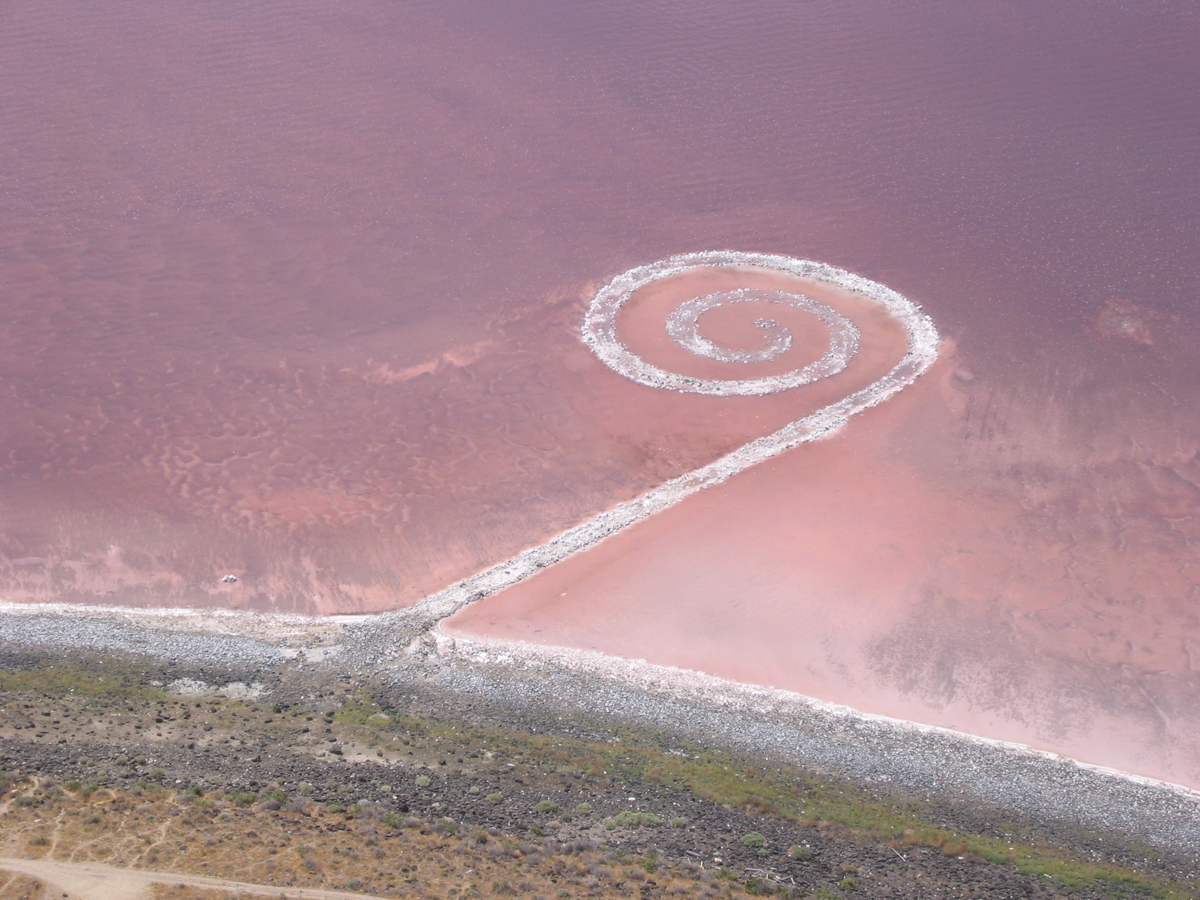
“Museums are tombs,” Smithson wrote in a 1967 essay, “Some Void Thoughts on Museums,” implying that artwork went to museums to die. Robert Smithson and Nancy Holt - who created the art installation Sun Tunnels in the Utah west desert in Box Elder County - were among the leaders of what was called the “land art” movement, aimed at imposing large-scale artistic vision onto the natural world. (Leah Hogsten | The Salt Lake Tribune) People explore the Spiral Jetty, just south of the Rozel Point peninsula on the northeastern shore, March 25, 2022. “But he wasn’t, ‘In 50 years, here’s what people are going to think about my work.’” “He wanted a very dynamic environment, so the salt crystals would form, dissipate, the colors would change and the water would rise and fall,” Loe said. In her book, Loe - who now teaches at the University of Nevada-Las Vegas - references a quote from Smithson, where he essentially says, “If the Spiral Jetty goes under the water, I’ll just build it up another 15 feet.” Smithson never intended Spiral Jetty to be a barometer of anything, said Hikmet Sidney Loe, a former professor at Westminster College who wrote “The Spiral Jetty Encyclo” (University of Utah Press, 2017), a comprehensive book about Smithson and his most famous work. “Now, it’s very unlikely that the waters will ever reach Spiral Jetty because of the protracted droughts in the Great Basin Desert.” The jetty “is a barometer for the ways in which we are operating in a climate emergency,” said Lisa Le Feuvre, the head of the Holt/Smithson Foundation, which oversees the creative legacies of Smithson and his wife, Nancy Holt. Smithson died at the age of 35 in a plane crash while photographing the site for one of his earthworks, Amarillo Ramp.“Now, if I stood in that same place, there’s not a chance I could ever throw a rock and hit the lake,” she said. His sculptures embody the spirit of some of the great monuments of past civilizations yet they are contemporary in concept and execution. These endeavors in the land enabled Smithson to explore chaos and order-how natural forces such as wind, rain, heat and cold, would affect the work over time. At this time a small group of artists were engaged in reformulating their ideas of art in relationship to the land. In 1970 Smithson moved his work outside of the gallery walls to concentrate entirely on earthworks such as Spiral Jetty, Partially Buried Woodshed, and Amarillo Ramp. Embodied in all of Smithson's endeavors was his interest in entropy, mapping, paradox, language, landscape, popular culture, anthropology, and natural history. He also developed a wide variety of photographic works - none of which dealt with traditional composition or conventional image making. He moved beyond modernism's hermetic tendencies by abandoning formalism, rules and traditional art materials.īeginning in 1964, he emerged with minimal-like structures that veered away from minimalism's closed systems. Smithson's earthworks defined an entirely original notion of landscape. The earthworks were a radical departure from making formal objects situated in a gallery setting, producing an artform that was non-commercial and could not be owned or seen easily. He was one of the founders of the art form known as earthworks or land art, and is most well-known for Spiral Jetty, 1970, located in the Great Salt Lake, Utah. Guggenheim Museum, New York, The National Museum of Contemporary Art, Oslo.

Smithson's works are featured prominently in major museum collections such as The Museum of Modern Art, New York, New York, the Solomon R. His work continues to inspire new generations decades after his passing in 1973. His complex ideas took root in many forms: drawings, projects and proposals, sculpture, earthworks, films and critical writings. Robert Smithson is an internationally renowned American artist, a pioneer of land art, who challenged traditional notions of contemporary art and redefined the language of sculpture.


 0 kommentar(er)
0 kommentar(er)
